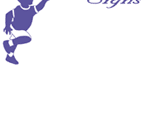|
The American Academy of Pediatrics (AAP) recommends all children be screened for autism spectrum disorder (ASD) at 18 and 24 months. An autism screening is simple and takes less than five minutes.
Routine screening for autism is essential because of the prevalence, the difficulty in diagnosing, and because children with ASD who receive an early diagnosis and appropriate intervention have the best possible outcome. Despite this, most children are never screened for autism. However, when a routine developmental screening raises concerns, or a child is at risk for atypical development, an autism screening is imperative.
An autism screening cannot provide a diagnosis, but it can help you and your doctor learn whether your child is showing delays or deficits in the two core areas related to ASD: (1) social communication and social interaction; and (2) restricted, repetitive patterns of behavior, interests, or activities.
The doctor may ask you a few questions and then spend a few minutes observing and interacting with your child, looking to see how he communicates, how socially engaged he is, and whether he exhibits certain repetitive behaviors or limited, obsessive interests. (For more information about autism screening tools, including examples, please see the Screening Toolssection.)
1 Core deficit areas for autism spectrum disorder are drawn from the Diagnostic and Statistical Manual of Mental Disorders (5th ed.) Washington, DC: American Psychiatric Association, 2013.
Back to top
Next page =>
| 



